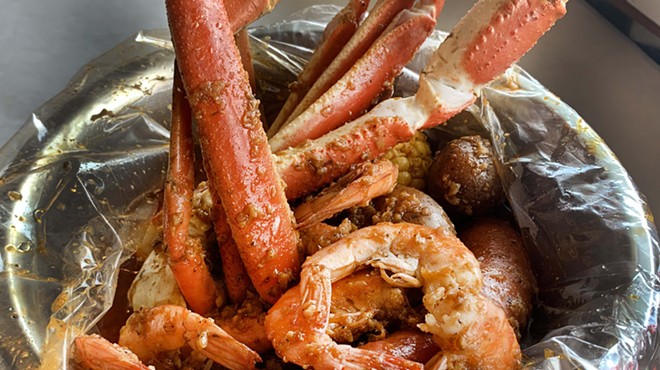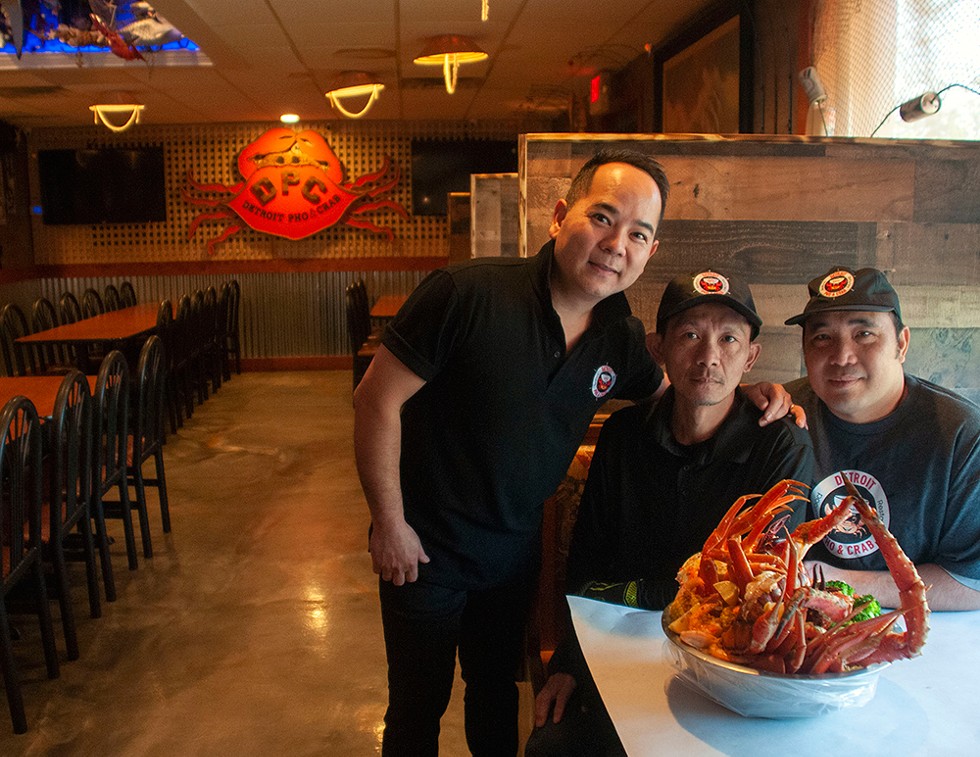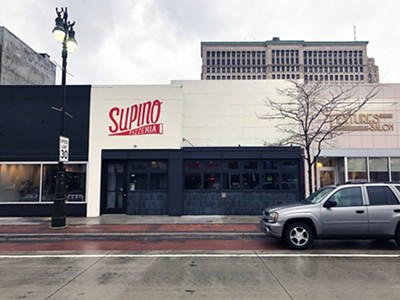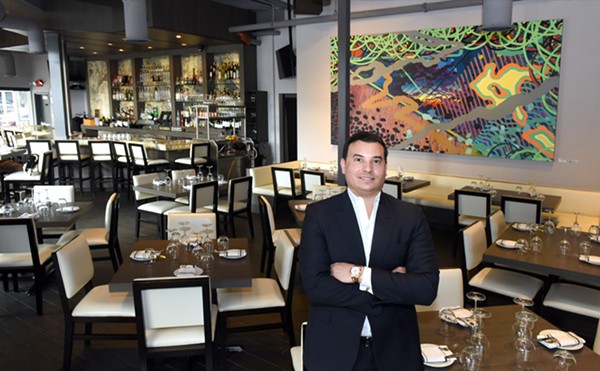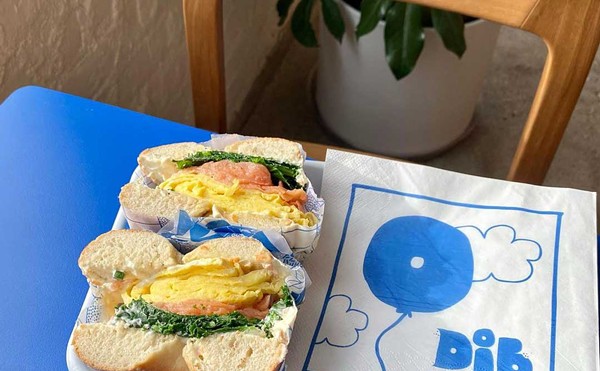
Across metro Detroit, seafood boil restaurants are stuffing glorious tangles of spiny king crab legs, slender snow crab legs, shrimp, crawfish, and lobster into bags studded with corn, potatoes, and sausage. The bounty is submerged in big-flavored butter sauces enhanced with ingredients like garlic, herbs, and lemon, and sometimes the package is spiked with what seems like handfuls of cajun spices that render the liquid a deep burgundy.
Chefs package the seafood in clear plastic bags that are typically placed in buckets before being plunked down on a table. Diners tie on a bib, pull on a pair of plastic gloves, and start peeling, cracking, noshing, and dipping while knocking back beers.
The seafood boil ritual is cartoonishly sloppy and a bit of a carnal affair, and it’s super popular. In recent years, about 20 boil purveyors have cropped up around metro Detroit, with names like Mad Crab, Crafty Crab, Saucey Crab, Crab House, Crab Hut, and Krazy Krab or Crazy Crab. Saucey Crab and 168 Asian Mart now host karaoke nights with their seafood boils, and acclaimed chef Max Hardy’s take on the genre, What’s Crackin’, is expected to open soon on Detroit’s Avenue of Fashion.
Restaurateurs say the reason for the concept’s popularity is simple: Combining salt, butter, spices, crustaceans, and a sanctioned mess is a winning formula.
“You got the bib. You got the gloves. You got the flavor. And you go divin’ into the bag. It’s an experience,” says Saucey Crab owner Angie Middleton, who has restaurants in Detroit and Southfield.
The wave hasn’t only hit Detroit — hundreds of similar restaurants have been bagging up seafood around the country over the last several decades, and while the concept traces back to the Louisiana seafood boil, the craze is actually what food historians and Gulf Coast chefs have more accurately labeled Viet-Cajun — a confluence of Vietnamese and Louisiana cuisines and cultures.
Viet-Cajun boils involve a few minor but important differences. Chief among them: the crustaceans are served in plastic bags filled with bold sauces. In traditional Louisiana boils, shellfish aren’t bathed in butter sauce bags or accompanied with dips. Vietnamese-American immigrants are responsible for that tweak, and that happened in Houston, not New Orleans, sometime in the late 1990s.
“The whole thing was born and bred out of Houston about 20 years ago,” says Kiet Duong, who in 2013 opened the Crawfish Cafe at a food court in Houston’s Chinatown. He estimates there are eight Viet-Cajun seafood boil spots within three blocks of his restaurant, and says the dish is now as much a part of the city’s identity as brisket.
But what we see in Detroit is still a little different yet. Viet-Cajun restaurants around the country are largely owned by Vietnamese-Americans and/or are part of corporate chains. That partially holds true in southeast Michigan’s suburbs (Raleigh, North Carolina-based Crab Du Jour recently opened a location in Dearborn as part of a rapid national expansion), but most restaurants in Detroit — the nation’s Blackest big city – are Black-owned, and some incorporate a soul element. Detroit Crab House Ribs and Soul Cafe, which first opened in 2009 and now has two locations, claims to “have brought the seafood boil flavor to the city,” and offers ribs, pork chops, chicken alfredo, baked potatoes, greens, and more.
There’s also a difference in the sauces, Middleton says. Those at Vietnamese-American-owned restaurants are good, but those at Black-owned shops “are different, you get more spice, more flavor,” she says. Those may be fighting words, but the lowest spice level at Saucey, called “light foot lion,” is electric with cayenne, while the hottest, “piping pistons,” is so hot it might as well be molten.
The concept may be especially popular here because so many have roots in the deep south, with their families arriving during the Great Migration, so seafood boils are “a natural fit for Detroiters — a natural progression,” Hardy says.
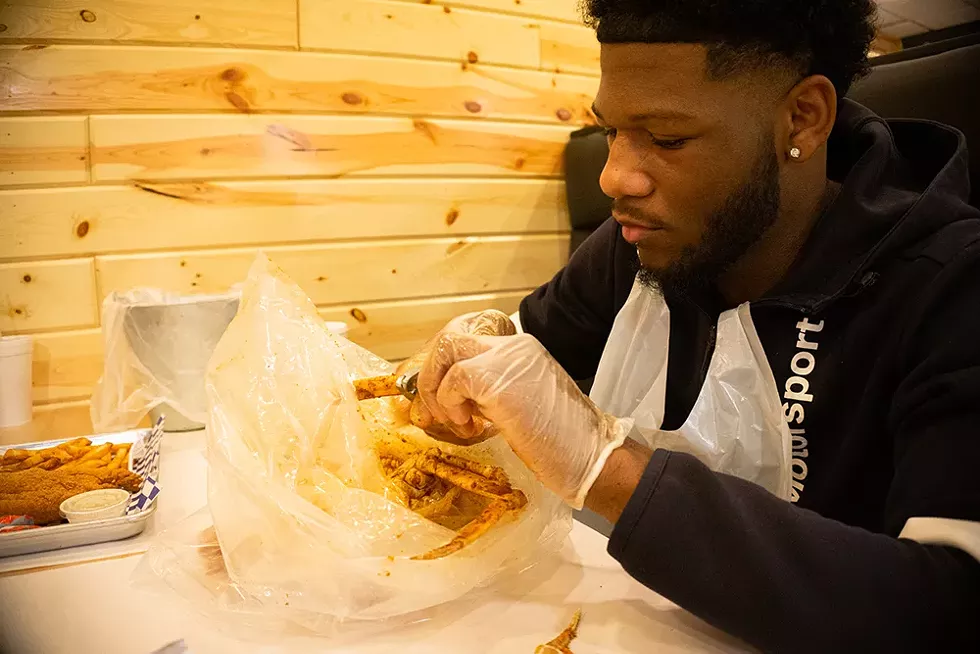
Regardless, Detroit’s boil restaurants represent a localized evolution to an already compelling story that on a deeper level illustrates how American imperialism, immigration and migration, and local flavor profiles shape the nation’s food and culture.
Detroit’s boilers came to their craft along diverse paths. Middleton, a former hair stylist and co-owner of the Sauce Bar on Seven Mile Road, saw how the bar’s 2017 boil night took off, and opened Saucey Crab the next year.
On the east side, DeCarlos Stewart is a proud entrepreneur who saw the boil as a business opportunity. He added crustaceans to the menu a few years ago at his late-night carryout restaurant, Detroit Wing Spot, which he now describes as “if McDonald's sold lobster instead of cheeseburgers.” He had no culinary experience prior to Wing Spot, but taught himself the art by watching online videos and cooking shows. The boil boomed, so Stewart set out to build a sit-down, seafood boil-centered restaurant in Warren, which is expected to open this fall.
“For me, it was trial and error,” Stewart says. “I have YouTube and my imagination. You start finding inspiration and say ‘OK, what's poppin’? What do people want?’”
“You got the bib. You got the gloves. You got the flavor. And you go divin’ into the bag. It’s an experience.”
tweet this
In Warren, Detroit Pho and Crab was among the region’s seafood boil pioneers. It’s owned by the Le family, which moved here from California, where Viet-Cajun boils have been a thing for about 15 years. The family had run a nail shop at one point, but they saw an opportunity to open one of the first concepts in 2017 and jumped at it. Pho and Crab remains one of metro Detroit’s most popular boil spots, and also offers a range of Vietnamese dishes.
Its dining room on a recent night highlighted the cuisine’s power to bring diverse groups together in a way that few other foods in metro Detroit can.
Co-owner Peter Le touts the fresh garlic and ingredients that he uses in his sauces — instead of a premade cajun spice blend — as the secret behind the restaurant’s success, but, wider angle, he sees the concept’s popularity in pretty simple terms: “People love seafood and they don’t just want it boiled — they want the sauce on it.”
The roots
To fully understand Detroit's boil boom, one has to go back to the 1975 fall of Saigon when tens of thousands of Vietnamese fled for the states as the Vietnam War entered its final chapter. Many landed in the Gulf of Mexico region, and soon they were putting their own touches on dishes like the seafood boil while developing what would eventually be called Viet-Cajun cuisine.
In Louisiana boils, crawfish and other crustaceans absorb all their flavor from coriander, mustard seed, lemon, bay leaves, and other seasoning that’s added to the boiling water, along with corn and potato. The pot is drained and the goods are placed on a table and picked apart as are, sans sauce. In Viet-Cajun boils — and in what we see variations of in Detroit — chefs sometimes boil crustaceans in spices first, but typically also shake them up in the plastic bag butter sauce bath, and diners pull shellfish from the plastic bag.
“The main difference between the two is the sauce. In the Louisiana boil, you put the garlic and seasoning in the pot, pull it out, and you don’t soak it in sauce — you just serve it the way it is,” says Duong, who runs Houston’s Crawfish Cafe. “The sauces add an extra layer of flavor.”
New Orleans didn’t even have such a restaurant until recent years, notes Viet-Cajun chef Anh Luu, who runs the kitchen at New Orleans’ Bywater Brew Pub.
“People are very traditionalist here with their local foods, and boiled crawfish is a thing that people’s grandparents from the bayou taught them how to do,” she says. “It has taken a little a while to change their minds about how they want to eat their crawfish.”
Though the specifics of the Viet-Cajun genesis are vague, it’s generally agreed that it occurred in the food court at the Hong Kong Mall in Houston’s Chinatown. The point-of-origin theory is supported by one of the earliest known media mentions of Viet-Cajun seafood boils, a 2002 story from Houston Press food writer Robb Walsh under the headline of “Asian-Cajuns.” In it, Walsh expresses his shock at seeing a new concept in an early iteration at the mall.
“While I'm waiting for a couple of pounds of boiled crawfish at Cajun Corner restaurant, I notice a young Vietnamese-American guy approach the little table covered with condiments near the front counter. He dumps several tablespoons of a ground red pepper into a small bowl, then he squirts in mayonnaise and ketchup and stirs it all up.
"Is that a dipping sauce for the crawfish?" I ask him in disbelief.
"Yeah," he says. "I like it really hot.” …
“Tray in hand, I study the condiment station. I've been eating crawfish for many years, but I can't say I've ever eaten it with a dipping sauce.”
Soon after, the boil bags appeared, and during the early 2000s, the agglomeration would filter out to California, then across the country.
Viet-Cajun works so well for several reasons — the gulf and Vietnam are both coastal regions with similar climates, and the cuisines’ merger flowed naturally with their similar flavor profiles, heavy French influences, reliance on pork and seafood, and no shortage of salt and spice, notes Luu.
She’s taken Viet-Cajun beyond just the seafood boil, developing dishes with southeast Asian, Gulf, and even Mexican components, like crawfish étouffée nachos made with fried wonton chips, or a “phorrito,” which, as the name suggest, is a pho burrito.
Notably, and thankfully, Viet-Cajun cuisine hasn’t been altered as it went mainstream. Normally, spicy foods developed by immigrants or regional populations are “dumbed down” or made less spicy to suit white peoples’ palettes, Luu notes.
In fact, the opposite seems to be happening — the dishes in Detroit are possibly getting even hotter, and that could owe to several factors. America is an increasingly diverse place with an ever-evolving collective palette, and right now it’s demanding more authenticity.
Luu also notes that social media has played a clear role. Indeed, on Detroit’s east side, Wing Spot owner Stewart says he first learned of the dish via the internet. For all its flaws, social media does provide chefs with more of an opportunity to get it right, and the result is a cuisine that has remained intact by the time it reached Detroit.
“Real Vietnamese is super duper spicy, and ... all southeast Asian flavors would sometimes be considered over-salted or over-acidic, but I think people are ready for this,” she says.
Still, as the bagged version of the boil fans out across the country, it sometimes seems to get lost, or ignored, that it isn’t a Louisiana invention. At first, some Vietnamese-Americans even downplayed the fact. As the New York Times noted in 2010, one popular Vietnamese-American chain that blossomed in California during the 2000s, “portrays [co-owner] Mr. Nguyen as a beer-drinking good ol’ boy from Seadrift, Tex. Ms. Ngo, his Kansas-born bride, goes by the handle Yo’ Mama.”
But at this point, Viet-Cajun is something more. Vietnamese-Americans are several generations deep in the Gulf region, the two cultures are intertwined, and Luu views Viet-Cajun as more of a regional American cuisine than just a few “fusion” dishes.
“It’s a melding of cultures because Vietnamese people have been living in New Orleans for so long,” Luu says.
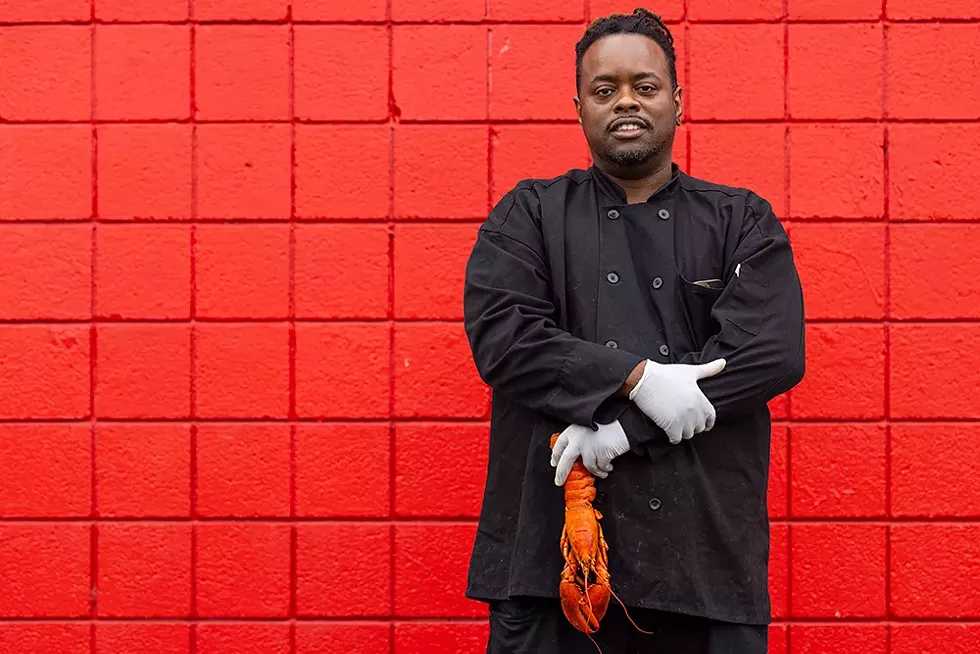
Detroit’s boilers
When asked how he started making seafood boils, Stewart, who describes himself as a born entrepreneur, goes back to the very beginning of his career. Raised in Alabama and on Detroit’s east side, his first business at 12 years old was peddling candy in a Wal-Mart parking lot. But the other boys on his block were making big money selling drugs, and though Stewart knew in his heart that he wasn’t cut out for that life, he saw dollar signs. That venture lasted about two days: The bosses ordered him back to selling candy after he was tricked by a customer who he gave too generous of service to, and wouldn’t rough up the guy afterward.
“I was a kid, and I was like, ‘You know, you’re absolutely right, I am not built for this,’” Stewart recalls with a laugh.
Years later, still on the east side and with no culinary training, Stewart converted an old party store into Wing Spot, which initially made its name for its wings and a lamb chop recipe that he developed from watching cooking shows on YouTube. Simultaneously, he grew his other company, Voo Vodka, which he says is the nation’s first Black-owned premium vodka brand. He describes building the businesses as “organized chaos,” but he succeeded with both.
In 2018, something else caught Stewart’s attention on social media: seafood boils. He returned to YouTube to study the concept and draw inspiration, and developed his own twist on it. His flavors are big and bold, but his seafood is steamed, not boiled.
Wing Spot does well with lamb chops, but people really turn out for crab, lobster, shrimp, crawfish, mussels, and other shellfish dripping in butter sauces with minced garlic, paprika, and a list of other spices and herbs that Stewart keeps secret.
“I don't have a million customers served yet, but I’m continuing to hit my goals,” Stewart says. “I got you calling me, so that’s a good indicator of how it’s going right there.”
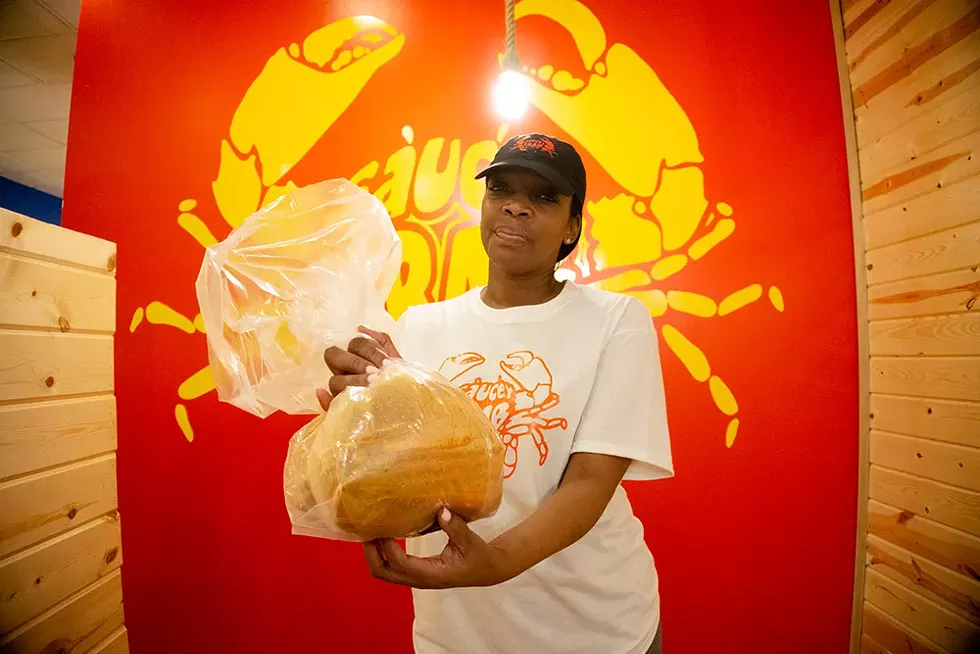
On Livernois Avenue, chef Max Hardy is making progress on his soon-to-open restaurant, What’s Crackin’. He grew up in Detroit and made his name as “the chef to the stars” in Miami, cooking for the likes of Missy Elliot and NBA star Amar’e Stoudemire before returning home to establish the former Caribbean comfort food concept River Bistro on Grand River, and Coop, a Caribbean fusion restaurant, in Midtown’s Detroit Shipping Company food hall.
Seafood boils aren’t a far leap from his current trade, and he says he’s dialing in six to seven sauces, including some that he describes as “a spicy coastal seafood kind of blend,” herb butter, jerk, curry, and a lobster butter sauce that’s similar to a lobster bisque, but even more buttery.
What’s Crackin’ will bring in what they can locally for their catch of the day, but the crab will be pulled from the Chesapeake Bay waters off of Crisfield, Maryland, which Hardy says “is where all the best crabs come from,” and flown into Detroit.
“I figured it would be good to go straight to the source on the crab,” he says.
The restaurant will welcome diners with a big island vibe, seafood murals, and bright reds and blues — something that Hardy says would be at home on the coast.
“It’ll be fun,” he adds. “You put on an apron, get a cracker, and go at it. And it's a lot of flavors with different sauces, crab, fish, lobster, shrimp, and so on. That’s what people want.”
The inspiration for Middleton’s Saucey Crab dates back to her days as a Chicago hairdresser. On their days off, she and her girls would get together and buy crab and a case of beer. A few years later she would move to Detroit to open the Sauce Bar with her husband, and on Wednesdays they started hosting a seafood boil night.
“People were lined out the door,” Middleton says, so she opened her first Saucey Crab location in Southfield in October 2019, and, as business spiked, a second spot in Detroit earlier this year.
Her menu also offers po’ boys, excellent catfish sandwiches, gumbo, fried oysters, and more. Middleton says she at first did a huge amount of business, but two developments put on the brakes: the pandemic and the dozens of new boil restaurants that opened after her. Still, business is picking back up, and more people are filtering into her brightly colored restaurant in Southfield.
At Detroit Pho and Crab, colorful lights illuminate a dining room and bar with walls filled with nets, swordfish, crabs, and seagulls. Beyond the boils, it offers a range of traditional Vietnamese and cajun plates ranging from gumbo to po’ boys to bun bo hue, an awesome soup driven by lemongrass and coagulated pig blood that’s a central Vietnamese staple.
And in Warren, Stewart’s new restaurant will offer a full-service bar complete with a robotic bartender. With all the new restaurants, the question becomes: “Is the Viet-Cajun boil and Detroit’s twists on it here to stay?”
Stewart thinks so. “People just got a taste for a collection of seafood goodness. Why do people like cheeseburgers and why do people love french fries? It’s just their thing, and it is what it is, you know what I'm saying?” he says.
“Unless seafood falls out of flavor, I don't see it going anywhere anytime soon.”
Stay connected with Detroit Metro Times. Subscribe to our newsletters, and follow us on Google News, Apple News, Twitter, Facebook, Instagram, or Reddit.

